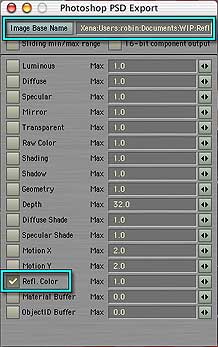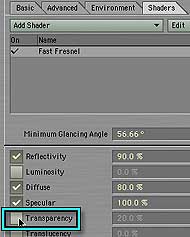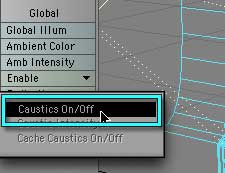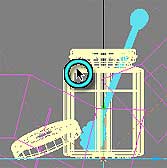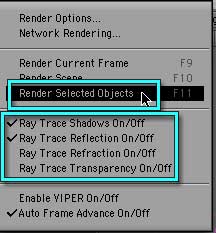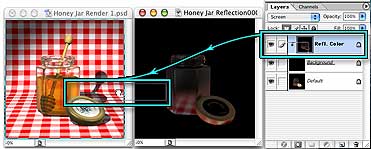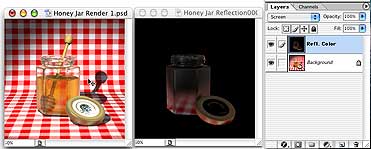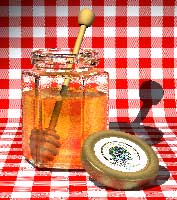
But what if you really need reflections? Do you just have to put up with nearly interminable renders? Not a bit of it.
Lightwave ships with a little filter called Photoshop PSD Export that will solve this problem. (Actually, it can solve a lot more problems than this one, because it breaks a render down into its components in a sort of simultaneous multi-pass, and saves them together in a Photoshop file with clipping groups. But we're going to ease into it, and just do this one thing at the moment.)
To use it, render your image as usual, with Caustics, Refraction, Ray-Traced Shadows and all, and save the render.
Click on the Scene Tab, and then click on Image Process in the Effects section of the Toolbar.
This will open the Effects Requester to the Processing tab. At the bottom of the Requester, there is a place to Add Image Filter. Choose Photoshop PSD Export from the drop down list.
